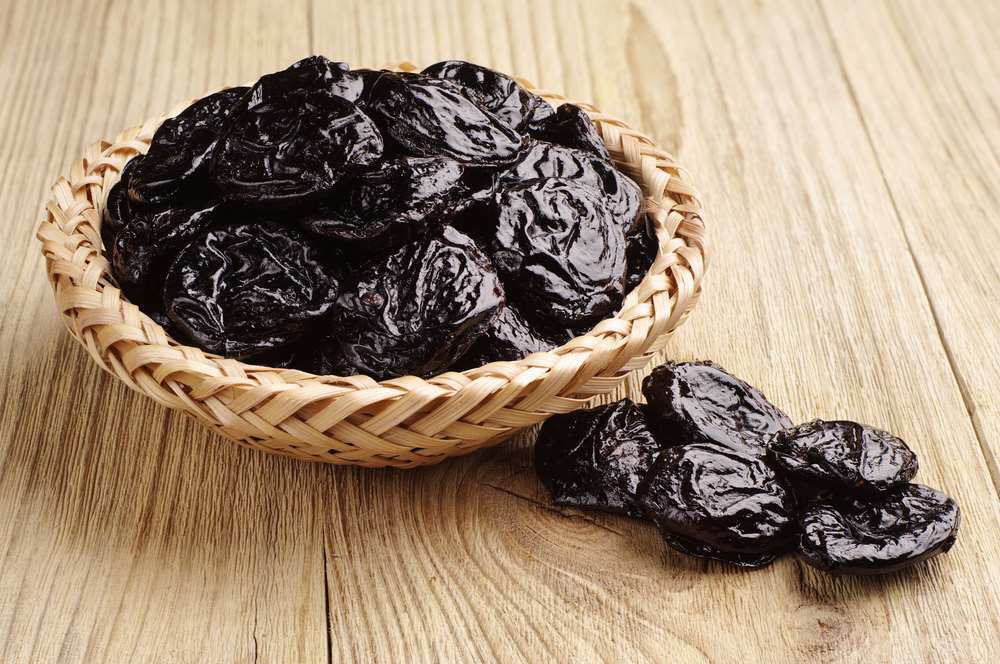
Prune harvest could start as early as this weekend. University of California Cooperative Extension Advisors Katherine Jarvis-Shean and Emily Symmes put together a checklist of pre and post-harvest considerations for growers to be prepared.
AUGUST
- Start anticipating harvest timing. The UC prune harvest prediction model anticipates harvest in the Sacramento Valley starting roughly in the third full week of August (18th – 22nd), based on regional bloom dates and CIMIS weather station data. The exact date will vary from block to block. In mid-July, start watching for when the first healthy fruit in the orchard start changing color. Harvest can be expected roughly 30 days after this change. For more on harvest timing, see sacvalleyorchards.com/prunes/horticulture-prunes/prune-harvest-timing/.
- Time your irrigation cut-off to improve dry-away ratios, reduce premature fruit drop and decrease shaker bark damage at harvest. The sweet spot of when to cut irrigation varies by soil type and other considerations. Keep in mind that dry soil reduces potassium (K) uptake and stressing trees may encourage sunburn and growth of Cytospora cankers. The pressure chamber is a great tool for judging whether trees are overly stressed for lack of water. Moderate to high tree stress (-16 to -20 bars) may be tolerated a week or two before harvest. However, for July and August prior to harvest, stress should be mild to moderate (-12 to -16 bars). Read more on using the pressure chamber for prune irrigation decisions atanrcatalog.ucdavis.edu/pdf/8503.pdf and/or sacvalleyorchards.com/manuals/stem-water-potential/.
- Monitor fruit maturity development with a pressure gauge. Randomly sample five fruit from five trees per block (25 fruit), making sure fruit come from both the inner and outer canopy. Measure pressure on both sides (cheeks) of each fruit (25 fruit x 2 pressures/fruit = 50 readings). Average all 50 pressure readings. Ideal fruit pressure at harvest is 3-4 pounds. Fruit pressure drops roughly 1-2 pounds per week, but hotter conditions results in a slower decrease in fruit pressure (cooler weather results in faster softening). While you have your fruit samples, take one half from each fruit and blend them to obtain a juice sample to use on the refractometer for sugar tests.
- Clean the orchard before harvest of dead and dying limbs and significant suckers. This will help minimize tree damage during shaking and make for a more efficient harvest.
- Examine fruit pre-harvest to evaluate damage. Two to four weeks before harvest, evaluate 40 fruit per tree from 25 trees throughout the orchard for worm, scale, and brown rot damage. Fruit can be picked or evaluated on the tree. If you just take samples at harvest, you may miss damaged fruit that dropped early that may indicate potential improvements to your IPM program. An evaluation form is available at: ipm.ucanr.edu/PMG/C606/prune-fruitdamagesample.pdf
- Consider running a field sizer at harvest. A small sizer (e.g. 15/16”) is useful for all operations to remove garbage and damaged fruit. Talk to your packer. Different sizers may be useful for those whose packers won’t pay for small fruit. When thinking about targeted fruit size, remember to account for change in size during drying. For more, see the article on fruit sizing in this newsletter.
- Manage post-harvest irrigation to minimize stress. Following harvest, stress should be mild to moderate (-12 to -16 bars).
Post-Harvest
- When making fall nutrient management decisions consider your July leaf sample results and crop load. If nitrogen levels in your July leaf sample were below the critical value, consider a fall foliar nitrogen spray, especially in young orchards where low nitrogen can predispose the trees to bacterial canker infection over a wet winter. Soil applied nitrogen, especially after September, is vulnerable to leaching because of limited root activity. Soil applied potassium (K) should be banded in the fall.
- Plan for pruning to remove Cytospora cankers, cut out branches damagers during harvest, tame tree size and manage next year’s crop load. To make sure you’re cutting all infected wood from the tree, see photos of a “clean” pruning at sacvalleyorchards.com/prunes/pruners-pocket-guide-for-cutting-out-cytospora. Avoid pruning two weeks prior to a rain event. Consider protecting pruning wounds, especially if rain is in the forecast with a fungicide spray (e.g. Topsin-M® or Topsin-M + Rally®). See article on cankers in this newsletter.
- Fall and winter preventative management for aphids can be an effective and ideal time to treat orchards with a history of problems, particularly if no dormant sprays will be applied for scale or peach twig borer. Fall aphid sprays are not effective for scale and don’t provide the same level of control as dormant timings for peach twig borer populations. During the dormant period, a moderate rate of pyrethroid is effective on aphids and peach twig borer, but keep in mind water quality risks when timing dormant pyrethroid applications. Adding oil to a dormant pyrethroid treatment can provide additional (moderate) efficacy for scale populations. For additional detail, see articles on prune aphid management at: sacvalleyorchards.com/prunes/
- Dormant spur samples can be used to scout for San Jose scale and European fruit lecanium, evidence of parasitism in both species, as well as aphid eggs and European red mite eggs in this sample. More information on dormant sampling and treatment thresholds ipm.ucanr.edu/PMG/r606900511.html.
- Conduct a post-harvest weed survey (ipm.ucanr.edu/PMG/C606/prune-fallweeds.pdf) to evaluate your 2019 weed control program efficacy. Pre-emergence herbicide should be applied shortly before a moderate rain event (0.25”) to move material into the soil. Avoid application prior to a large rain event (> 1”), which can move the product too deep into the soil for good weed control.
- Late fall to early winter is prime gopher control timing because populations are generally lowest at this time of year. See gopher control strategies at:ipm.ucanr.edu/PMG/r105600211.html
Source: Univ. California Cooperative Extension
Sponsored Content










